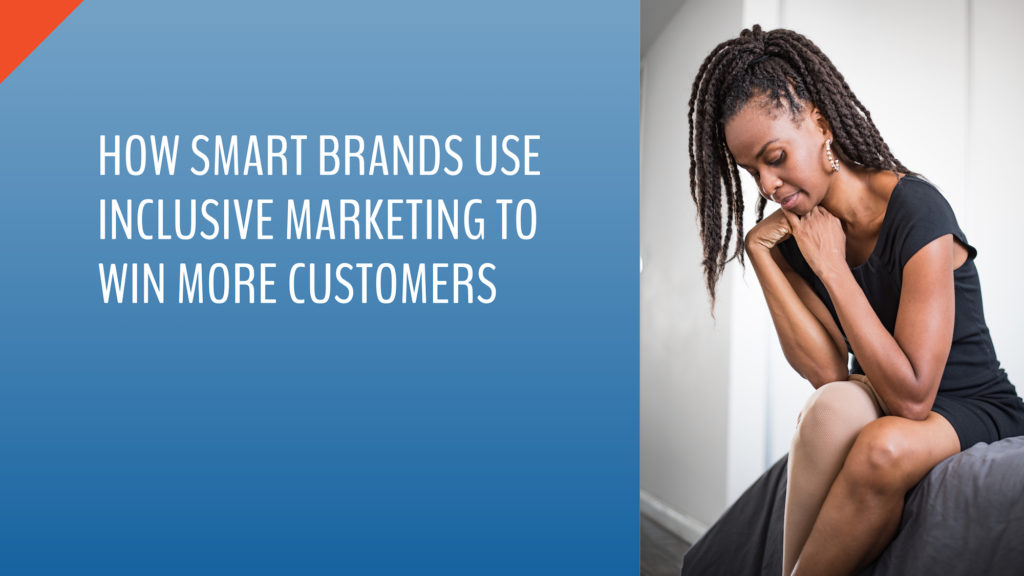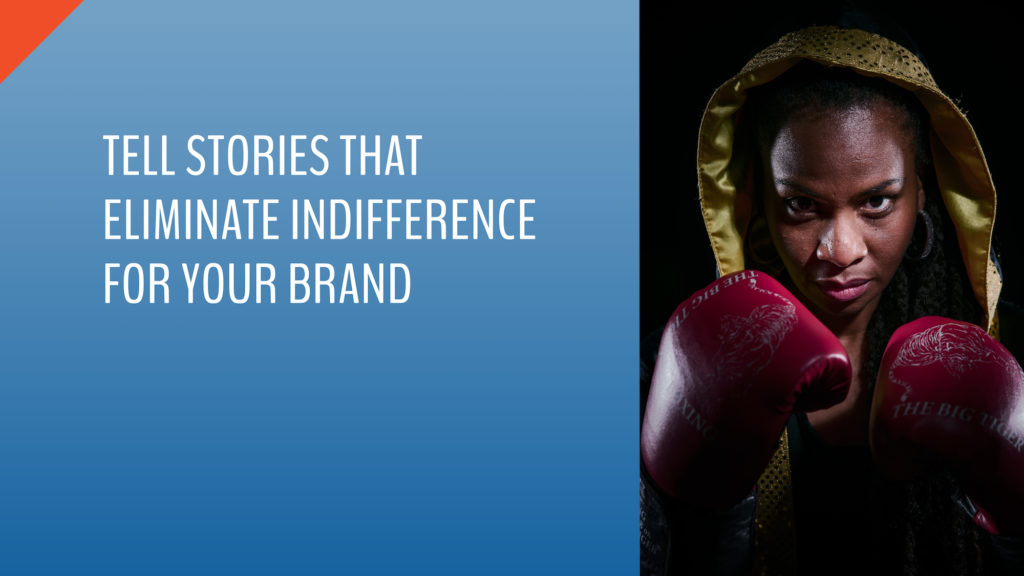Do you believe in soul mates?
In life, do you believe that there is that perfect person who is best for you? That one person that when you find each other, the two of you are destined to live life happily ever after?
Whether you embrace this concept in love or not, in business soul mates totally exist.
For every business, there is the perfect customer. And when your business is united with that ideal customer, magic happens.
You’re able to serve and delight this client like none other. And she won’t be able to get enough of what you have to offer. No other option will do.
Finding and serving your ideal customer is essential if you want to build a business that thrives.
So in the rest of this post I’ll go over what you need to do to figure out who your ideal client is.
And just in case you’re struggling to commit to just one customer in your business, here are a few more reasons why you need to settle down and find “the one.”
Why playing the field is bad for your business
A few months ago, I went to Miami for a girls weekend with my sisters and cousins. I did much of the planning, and we had a blast enjoying the weather, the water, and each other.
Even though we had lots of fun, it wasn’t the easiest trip to coordinate to ensure everyone had a great time.
That’s because planning a trip for seven women with varying interests, personalities, ages, life stages, and budgets ain’t easy.
First I had to consider what we would do. Some in the group wanted to hang out at the beach all day (me, me, me!). Others wanted to enjoy the Miami night life. Others just wanted peace and quiet while on a break from the duties of being a wife and mom.
Once there was a plan for what to do, I spent plenty of time thinking about how we would do it. For instance, some in the group were ok going places on foot. Others would had given a death stare at the suggestion of walking more than a few blocks.
So I spent a ton of time and energy both before and during the trip, trying to think about each person. I wanted to make sure we did something to accommodate everyone’s most pressing needs and desires.
And even though the vacation was a success, as the planner, it was so much harder than if I only had one person to think about. Compromises were necessary to create the best experience possible for the seven of us.
Contrast that with planning to spend a day with my niece Jade. She’s eight, and she loves to draw, paint, play outside, and get her nails done.
So if I was to plan a special day specifically for her, first we would go to the nail salon and get manicures and pedicures. After a quick lunch, we’d head off to Color Me Mine, where she’d get to show off her artistic skills with paint.
Next, we’d go to the park to do some barefoot cartwheels in the grass. After that, we’d go back to the house, cook dinner and then watch the movie Annie.
What better way to finish the day, than with cupcakes? Of course they’d be red velvet, one of Jade’s favorites. 🙂
Jade would have a blast (me too!), because she would experience a day designed specifically for her enjoyment. And it’s not too difficult for me to plan a day like this, because I know my niece.
The same principles apply for your business.
If you’re trying to please many people with differing backgrounds, needs, and priorities, you may be able to do ok. Just know that everyone will be a little happy.
But “a little happy” won’t help you create delighted and loyal customers.
And that’s super frustrating, especially when you work hard to make sure you serve your customers well. No bueno!
Instead, focus your energy on making one person happy. Spend your time trying to give your one ideal client the best possible experience you can give her.
The results will be tremendous.
Why focusing on one customer doesn’t cause you to lose out on others
Many entrepreneurs balk at the thought of focusing on just one type of customer. They feel like narrowing their focus will limit their prospects.
This objection may make sense in theory, but in reality it just isn’t true.
Remember that awesome day I’m planning for my niece Jade? Well, Jade has a little brother, Joseph. He’s three.
And if I let Joseph tag along on the festivities planned for Jade, there is no doubt in my mind that he would have an awesome time. There’s no way he’d want to miss out on any part of it.
Jade and Joseph also have a cousin who lives close by. His name is Gabriel and he’s seven. If I invited him to join the fun, he would say yes too.
He may not have the most fun at the nail salon, but everything else we would do afterward would make up for it.
And if I decided to take the three of them out again the next month, neither Joseph or Gabriel would hesitate to hang out with us. Even for a day designed around Jade’s needs and desires. ‘Cause they’ll get value out of it too.
If you focus your time and energy on creating the perfect experience for your business’ soul mate, you will delight her. And the cool thing is that other customers with similar interests are able to enjoy themselves too.
It may not be 100% perfect for them, but it would be good enough that they would gladly sign up for another dose of what you have to deliver.
More benefits of focusing your energy on your perfect customer
The end result of creating a remarkable experience for your perfect customer is definitely attractive. But when you’re in the trenches working on the day-to-day elements of running your business, it can be tough to focus on the big picture.
There is good news. When you focus your energy on your business’ soul mate, it helps you with those tactical day-to-day elements of running your business as well. Here’s how serving “the one” vs “the many” can help you out in your daily work.
You speak the right language
One of the great things about talking to your soul mate, is that you don’t have to speak in a way that doesn’t sound like you. You say what you mean, in the way that you mean it, and she gets it. ‘Cause she loves you.
And she appreciates you. And the way you communicate was probably one of the things that drew her to you in the first place.
So if you suddenly started sounding all corporate, and big, and fancy, and lame, she might look at you crazy, and wonder what’s happened to you.
It’s a similar feeling and experience when interacting with and talking to your ideal customers. They want you to sound like you. And they want you to talk to them in a way that feels comfortable and familiar.
Joanna Weibe of Copy Hackers is a great example. She’s a copywriter that I learn lots from. And one of the things that I really like about her is her laid back style. I dig the way she talks. I find the fun and quirky tone refreshing. It makes me feel like we’re buds. Here’s an example:
Her style works for me because I’m one of Joanna’s people. The authenticity in her writing attracts me to her business.
That’s what you want. You want the words that you say to attract your ideal customers. But you also want it to repel the people who are not right for you and your business. Otherwise you’ll spend a lot of time and energy trying to serve someone who may never appreciate your value.
Joanna’s writing accomplishes that goal as well. Here’s her bio that appeared at the end of a post she wrote for a really large and popular marketing blog a while back:
I giggled when I saw the word “mofo.”
And here’s just a piece of the thunderstorm that erupted from someone who is not Joanna’s perfect customer:
Here’s the key takeaway for you: You have to communicate with your customers. With words. Often.
So whether it’s on your website, in FAQs, sales copy, blog posts, or even in person, the words you use matter.
And when you focus on pleasing your business’ soul mate, it’s much easier to find the right words to say to woo her.
You know how to add value
For your perfect customer to give you the time of day, you’ve got to add value to her life. And if you want her to stick around for a while, you’ve got to consistently make her life better.
But how do you add value? An often used and extremely effective approach is to provide valuable, free content as a way to attract your ideal clients to you.
And if content is your approach, as an example, what kind of content should you create?
The kind of content that you know your soul mate likes best, and in the format in which she is most likely to receive it.
Let’s say your ideal client loves to read, has bookcases full of books, and consumes a massive amount of online blogs. Writing blog posts or writing a book could be a fabulous way for you to add value.
That may not work if you know she has more of an auditory learning style, or if she spends long stretches of time on the road commuting. Creating a podcast might be the way to go.
But format of content is only one consideration.
When you know what’s going on in your perfect customer’s world, you can create the type of content that speaks to her needs.
So if she’s planning a trip to Barcelona, you can create a list of the top places she must visit, or a top ten list of restaurants, or places to stay.
Or if you know she’s struggling with how to take pictures of her kids that don’t suck, you can teach her how to hold a camera. Or how to adjust the settings so she can make edits on the back end.
When you tune in to the specific needs and desires of your business’ soul mate, it won’t be hard at all to figure out how to make life better for her.
You know how she wants to have her problem solved
You’re running a business, so it goes without saying that you’ve got to sell stuff if you want to keep the lights on.
Selling your products and services is so much more of a long, uphill battle when you’re selling what you want to sell. Instead of what your customers want to buy.
So if you’re focused, and tuned in, your perfect customer will tell you exactly what she wants. And when you create it for her, it’ll make it a no-brainer for her to buy it from you.
On a recent episode of I Am the One: Entrepreneur Edition, Jared Easley, co-founder of Podcast Movement, talked about how he used this process to his advantage.
The common mistake entrepreneurs make when looking for their soul mate
Have you ever heard someone describe their ideal mate in a way that sounds anything like this?
- Tall, dark, and handsome
- Someone who treats me well
- Someone who’s got a graduate degree, makes more than six figures, and has a valid passport with at least five stamps in it
The information here is superficial, and only outwardly descriptive. And in most instances it’s not descriptive enough to help you assess which person is right for you.
In business, descriptions of ideal customers often have similar issues:
- Anyone who lives in or near San Diego, who also has to eat
- Men between the ages of 25-39
- Working moms
Entrepreneurs who take this approach think they are being clear about the type of person they want to serve. But descriptions like these fail to acknowledge that people are diverse and complex beings.
Think about it. Do you know two working moms? Are they similar in the way they think and problem solve when it comes to managing life while raising their kids?
Now, imagine two other working moms. One mom has a two-year old, and a husband who also works full-time. The other is a single mother of three teenage boys.
How similar do you think these two women are when it comes to priorities, problem solving, and raising their children?
Vastly different, right?
And yet, they both fall under that “working mom” umbrella.
External characteristics are directional in narrowing down the people you are trying to serve. But they don’t get to the heart of what will make somebody a great fit for you and your business.
So skip focusing only on superficial credentials when trying to figure out who your ideal customer is. Do this instead.
The right way to define the ideal customer for your business
If I asked you to tell me about the person that you are madly in love with, what would you say?
You’d probably give a variety of details. You’d tell me his “on paper” profile. His personality. His back story. What his dreams are. What makes him so special. And how he’s perfect for you.
You’d be able to provide all this info because you know him well, and you have intimate knowledge of him.
It should be the same for your customer.
If I asked you to tell me about your business’ soul mate, you should be able to download a ton of detailed information about her.
John Lee Dumas, host of the podcast Entrepreneur on Fire, has built a multi-million business in less than three years. He often talks about how a defining moment in building his business came when he finally sat down and created a detailed profile of his avatar, his ideal customer Jimmy.
Here’s how he described it in one interview:
I was struggling with all the decisions that I had to make in my business – and my podcast specifically – and the directions I wanted to take it. Because what a 19-year old college student would want is completely different from a 65-year old almost retiring male that is looking for that next, big thing.
And so for me, Rich, I was like ‘this is really slowing me down,’ because I was taking too much time, energy and effort at every single one of these decisions because I’m making them for people that are completely different. This has got to stop, I just need to sit down and write who my one, perfect listener could be. If I could just snap my fingers and that one, perfect listener would appear, who would that person look like?
And here’s John’s detailed description of Jimmy, the “perfect client,” for his business:
Jimmy is 34 years old
He’s the father of two, ages three and five, a boy and a girl
He has a wife and a job that he has to drive to by himself every single day. It’s a 27-minute commute.
He gets to work, and he sits at a cubicle for nine hours at a job he does not like.
After that 9 hours, he drives home, it’s about a 32-minute commute home, ’cause there’s a little bit of traffic.
He gets home, he plays with his kids, he has dinner with his family, puts his kids to bed, and hangs out with his wife a little bit.
And then he sits on his couch, and he wonders why:
- Why do I, Jimmy, spend 80% of my life doing things I don’t love and have no passion for, and in fact I kind of dislike a lot?
- 10% of my life doing things that I love – spending time with my family, my kids, my wife
- and the other 10% of my waking hours sitting on this couch, wondering why I’m wasting the other 80% of my life
Good stuff, right?
This profile works so well for John because it makes Jimmy a real person. Instead of a faceless “listener,” it’s the story of a buddy John could have easily had drinks with last night.
And now that Jimmy is a real, tangible person, John is able to make decisions in his business, based upon what is best for Jimmy.
Creating a detailed profile like this will be helpful for you. It helps you combine relevant demographic characteristics with psychographic information. The psychographic details help you a great deal, because they describe your soul mate’s state of mind.
How to get the information you need to create a detailed profile of your ideal customer
You could just sit down and start writing the profile that you think could work well for your business. It is a a step forward in the right direction.
But the better way to go is to get out of your head, and base the profile of “the one” for you, based upon what you know about real people.
In other words, you’ve got to do some research. You’ve got to spend time observing and listening to people who have the problem that you are able to solve. And the more you listen, the more you’re able to learn about them. Their life. Their state of mind. Their beliefs.
And when you add all that information together into one person, you’ll have a detailed view of your business’ avatar.
Here are some ways to find the information you need to help you craft your ideal customer profile.
Blog and forum comments
Check out the comments sections of blogs that your ideal customers read. Use it to find out what their motivations are, what their pain points are, and even to see what types of questions they have.
If a blog post moved them enough to induce a comment, you’ll surely be able to find some good points to work with there.
Let’s say you’re a copywriter who’s just getting started. And you’re interested in working with eCommerce companies. Head on over to Shopify, and see what types of things their community has to say on blog posts.
Here’s what one reader had to say after reading a post about writing product descriptions that sell on the Shopify blog:
This comment has lots of goodies in it. Not only does the reader explain what his primary challenges are in his business, but he also details what his aspirations are. He writes of how he wants his customer to feel.
With enough comments like this, you would have lots of great information to help you build a robust customer profile.
Another great way to get a peek into the minds of your potential customers is to observe relevant forums. For instance, there are private groups on Facebook and LinkedIn. There are other public threads on sites like Redditt. People voice their opinions every day on a variety of topics, so you’ve got plenty of material to work with.
Amazon Reviews
Amazon.com is great because you’re able to get the opinions of people who’ve spent money to help solve their issue.
The feedback in the reviews will give you great insight into what does and doesn’t work with your ideal customer.
Here’s one fascinating comment I found on Amazon when I was going through this process for my own business:
 One of my key takeaways from this was that it’s important to make success feel accessible, and attainable for my ideal client. She needs to feel empowered enough with all the information I provide, to feel she can make the dreams for her business a reality.
One of my key takeaways from this was that it’s important to make success feel accessible, and attainable for my ideal client. She needs to feel empowered enough with all the information I provide, to feel she can make the dreams for her business a reality.
1:1 Interviews
In this online world we live in, it can be sooooooo easy to forget that a great way to get information is to simply talk to people. Talk to your customers. Talk to the people who have the problem that your business solves.
But when I say talk, I really mean listen. You should do a whole lot more listening than talking. That way, you can find out what your people need, what’s troubling them, what they have done in the past that hasn’t worked, and what’s troubling or frustrating them.
Be human, and go have a conversation. Or two. Or ten. And make sure you make lots of notes on all the things you hear.
With the interviews, have a pre-determined list of key questions that will help you uncover the real root of what’s going on.
Informal Conversations
If you’re anything like me, you can talk about your topic and line of work all day every day to anyone who’s interested in discussing it.
As you have those spontaneous conversations, take the time afterwards to document what you hear. Take note of the often used phrases, or specific frustrations that pop up over and over again.
What people share with you during the normal course of conversation will provide a treasure trove of insights for you.
So once the conversation is over, don’t just walk away and say “yeah, that was a nice chat.” Write down any key points that stood out to you, that would be useful in crafting your profile.
How to turn your research into a profile you can use
Now, you’re not doing data collection just for the sake of doing data collection. You’re working to create a vivid picture of who your ideal customer is.
When I did this exercise for my business, I ended up with nearly fifty pages of information. By themselves, those quotes, comments, and rants didn’t do me much good.
But it’s what I did after I had it all aggregated that made it super valuable.
After I felt like I had a significant amount of information, I went through and organized it all into groups. Here are three categories that popped out for me, along with a few comments for each:
I looked for trends in mindset. I looked for similar problems, even if expressed in different ways. I looked for common words and phrases that my ideal customers used.
After analyzing all the information I took note of the feedback that rose to the top most frequently. I then used them to create profiles of customers that have the problem that my business can help them with.
Here’s one:
Dreamer Diane – Aspiring Business Owner
Dreams of building a business. Wants to reach her full potential. She knows she’s not going to reach her full potential at her current job. In fact, she hates her current job. But it’s a paycheck.
She’s fearful of going out on her own, because she wonders if she’ll be able to make a living with her business. She’s concerned about why anyone would listen to “little ‘ole me”, and pay her. She’s not even exactly sure how to get started building a business.
Time is a bit of an issue for her. She wonders where she’ll find the time to get started?
Dreamer Diane reads blogs, and sort of tip-toes around the entrepreneurship community. It makes her feel better that she’s getting all this knowledge. But she often doesn’t act.
She’s 32. She has responsibilities – a house, a car, a dog, and wants to have a family someday. She’s willing to invest in herself. And because she’s got a steady job, she has a little bit of breathing room to pay for things to help her build her business.
How to choose your ideal customer
Once you better understand the profiles of the customers your business can help, it’s time to figure out which one is right for you.
Remember, just because you can solve the customer’s problem doesn’t mean she is your soul mate.
You can’t begin to think about who the perfect match for you is, without considering you and your business. Here are a few things that you need to consider when narrowing down which client is right for you:
Your strengths
What are your unique gifts, talents, and skills that you’re able to offer your customers? What are the things that everyone tells you you do wonderfully? What are the primary reasons why the people in your world flock to you?
Think about those traits, and then compare them to the profiles you’ve created. Which customer would benefit and appreciate most from those strengths?
Your weaknesses
What are the areas you know you’re not a rockstar at? For instance, if you’re not the most empathetic or encouraging person, it probably is not ideal for you to choose an ideal customer that will require a lot of hand holding.
What energizes you?
Just because you’re good at something, it doesn’t mean that you like doing it. In fact, you can be great at something, and HATE doing the activity.
An ideal scenario is to structure your time so you can focus on the activities that give you the most joy, and that you are also good at.
Now when you consider those activities, how do they line up with the customer profiles you’ve created? Is there one type of customer that would benefit most from you solving their problem in a manner that energizes you?
What drains you?
Of course, there are often those tasks in business that are necessary to do. But boy, they sure can suck all the life out of you. What are those activities for you?
Ideally, you can delegate them to someone else.
But you need to know if there is a customer group that would need you to spend more of your time and energy engaging in those activities. If so, proceed with caution in choosing them as your soul mate.
Once you’ve answered these questions for you and your business, think about which one is right for you. Assess how each customer fits with your strengths and areas that energize you. The customer that fits most comfortably in the space that enables you to operate at your best is your soul mate.
It’s time for you to connect with your perfect customer
Finding your soul mate is a dream come true for many. And it would be fantastic if she just showed up at your door one day, and the two of you rode off into the sunset together.
But you can’t bank on that happening.
Which means you’ve got to put the work in to find her.
So if you want to give your business the best chance it has to succeed, you’ve got to commit. You’ve got to commit to your perfect customer. And then you’ve got to make it your business to delight and serve her every chance you get.
As you continue to do that over time, she’ll reward you with her attention, her loyalty, and her love.
Then you two can go off and create some magic together.
But first, you’ve got to commit.
Are you ready?
Here’s your homework for the week:
- Write down 25 dreams and desires for your ideal customers. Use actual data you’ve learned from your research.
- Write don 25 fears and frustrations for your ideal customers. Use actual data you’ve learned from your research.
- How do your ideal customers describe the problem that your business helps them solve?
- Write a detailed profile of your ideal customer.
